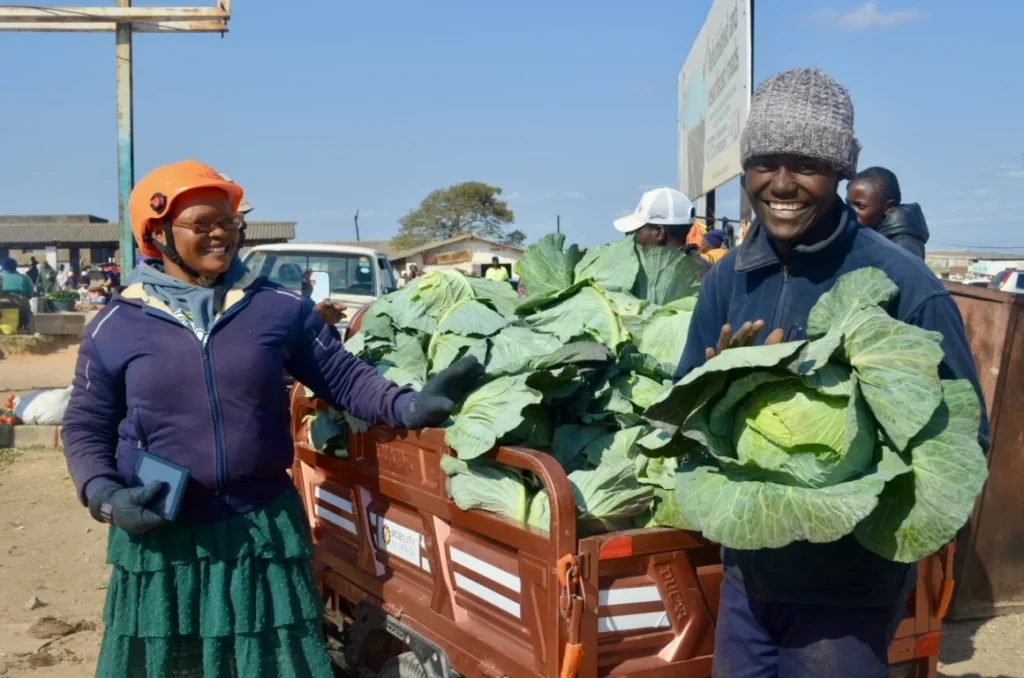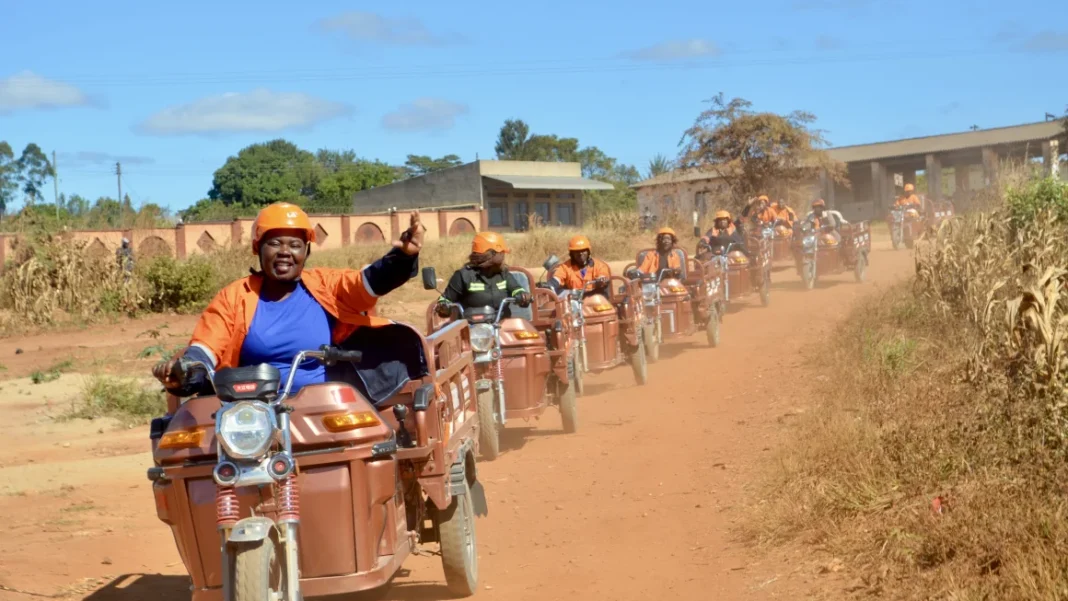Africa’s electric vehicle (EV) market is booming, but rural women are being left behind. Investors are pouring millions into electric motorbike start-ups that cater mostly to men in cities, while women in remote areas wait for their chance to join the EV wave. In many rural areas of sub-Saharan Africa, women haven’t been able to take part in major economic activities like running public transport services.
Shantha Bloemen, the founder of Mobility for Africa, is determined to change this narrative. Her solution? Electric tricycles. Mobility for Africa, a local startup, piloted the project in 2019 by leasing the vehicles to groups of women for $15 a month, according to cmglt.org.
Bloemen’s start-up focuses on rural areas, with women making up 77% of her customers. Unlike motorbikes, which are favored by men, tricycles are better suited for women due to their non-straddling seats and greater stability on uneven roads. “Three-wheelers mean you’re inclusive of women,” she told CNN Bloemen as she works to prove that these vehicles can transform lives. (CNN)
How Tricycles Are Changing Lives in Zimbabwe

Electric tricycles are transforming the lives of rural women in Zimbabwe, offering them opportunities that were previously out of reach. These three-wheelers, powered by solar-charged lithium-ion batteries, are designed to navigate the rough, unsurfaced roads common in rural areas. They are not just vehicles—they are tools of empowerment, enabling women to take control of their finances and daily lives.
In many rural communities, women have traditionally been excluded from mainstream economic activities, such as operating public transportation or running businesses. However, electric tricycles are reversing this trend. Known locally as “Hamba,” meaning “go” in Ndebele, these vehicles are affordable and accessible through lease-to-own programs. Women can lease a tricycle for as little as $15 a month, eventually owning it outright. This model has opened doors for women to become breadwinners, contributing significantly to household expenses and gaining respect within their families and communities.
The impact goes beyond individual users. Tricycles are being used to transport goods, deliver crops to markets, and even provide taxi services. They can carry up to 450 kilograms and reach speeds of 60 kilometers per hour, making them versatile for various tasks. For instance, farmers who previously relied on ox-drawn carts now use tricycles to ensure their produce reaches markets fresh, fetching better prices. This has boosted local economies and improved the livelihoods of entire communities.
Women who own or lease these tricycles report significant changes in their lives. They no longer spend hours walking long distances to fetch water, carry firewood, or transport heavy farm produce. Instead, they use their tricycles to save time and energy, which they can invest in other productive activities. The vehicles have also reduced the physical burden traditionally borne by women, allowing them to focus on education, entrepreneurship, and family well-being.
For women like Beauty Simango in the village of Hauna, Zimbabwe, electric tricycles have been life-changing. Simango, 33, now runs a taxi service and transports goods, earning $150 a week—five times her previous income of $30. While she pays $65 weekly toward her lease and battery swaps, she is on track to own the vehicle outright within a year. With her earnings, Simango is covering her children’s school fees and investing in farming projects. “It has helped our self-esteem as women,” she says proudly. (CNN)
Ghanaian Women Benefit from Tricycles
The impact of tricycles isn’t limited to Zimbabwe, it’s spreading across Africa. In Ghana, rural women are also finding these vehicles transformative. In areas like Ho Municipality, tricycles help farmers transport goods to markets, reducing the time and effort spent on manual labor. Women use tricycles not only for farming but also to run small businesses and transportation services. These vehicles have become a reliable way to boost income, improve productivity, and enhance independence.
Though challenges like limited charging stations and high costs remain barriers, the potential for growth is enormous. Mobility for Africa’s lease-to-own model could be a blueprint for reaching more women in Ghana’s rural communities. (ghanasentinel.com)
The Investment Struggle
Despite these success stories, Mobility for Africa faces challenges in securing funding. Since 2019, Bloemen has raised $6 million, half from grants like $380,000 from the Toyota Mobility Foundation. In comparison, urban-focused EV companies are raking in far more—Rwanda’s Ampersand raised over $21 million in just one year, while Spiro, an industry giant, has secured tens of millions in financing.
Urban areas are more attractive to investors due to higher population density and easier access to battery-swapping stations. Mobility for Africa currently operates six such stations, but the cost of setting them up in rural areas remains a hurdle. “Urban areas are a better bet,” explains Tom Courtright from the Africa E-Mobility Alliance. (CNN)
Bloemen’s vision for Africa
Bloemen dreams of expanding her electric tricycle business across the continent, inspired by Asia-Pacific, where tricycles are widely used. “I want to be the queen of tricycles,” she says confidently. While the journey is challenging, her determination is paving the way for rural women to join Africa’s growing EV revolution.
Change may be slow, but companies like Mobility for Africa and similar models show that EV solutions can reach even the most remote areas. However, with leaders like Bloemen, the future of EVs in rural Africa looks brighter than ever.




